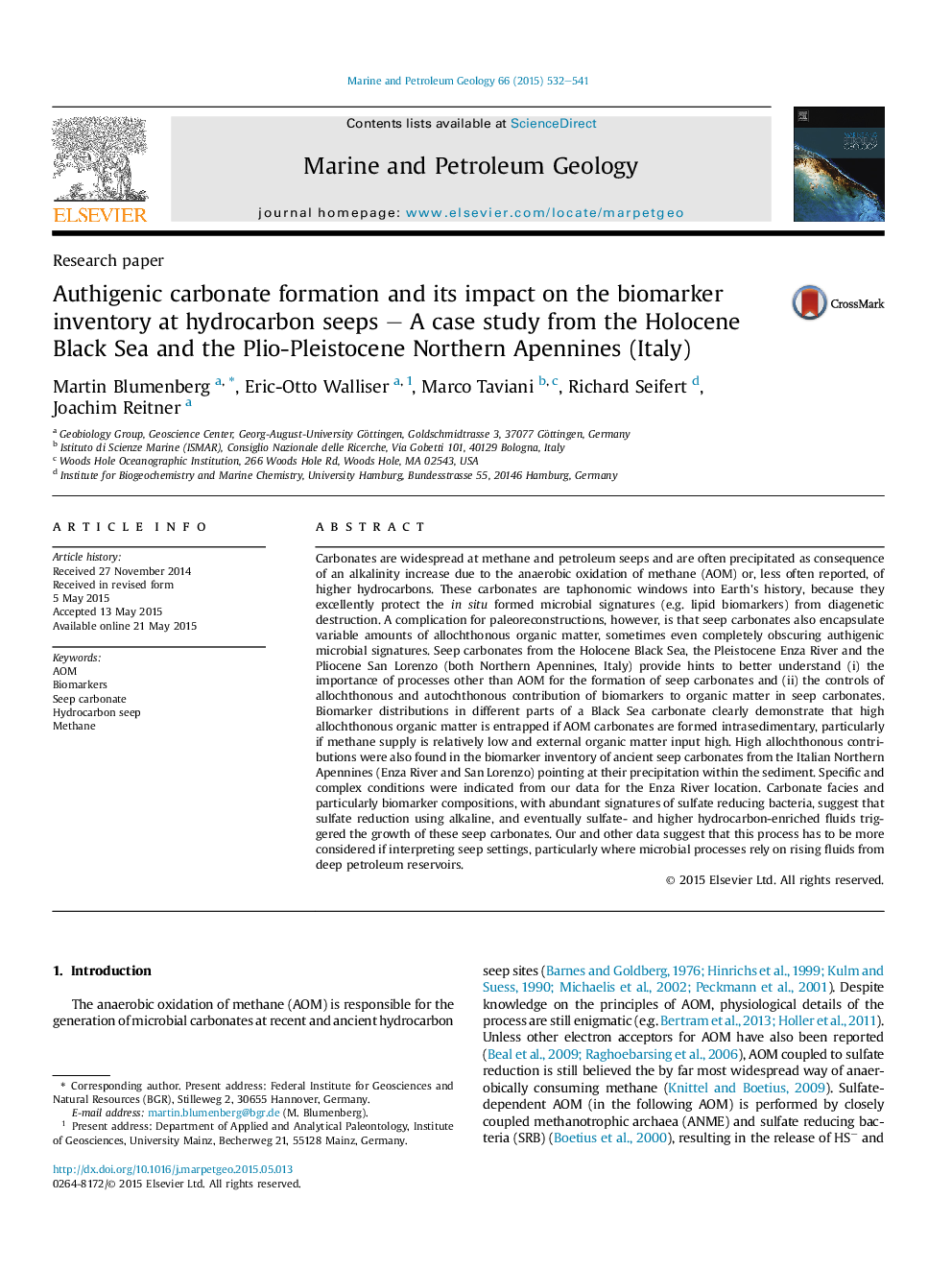| کد مقاله | کد نشریه | سال انتشار | مقاله انگلیسی | نسخه تمام متن |
|---|---|---|---|---|
| 4695546 | 1351616 | 2015 | 10 صفحه PDF | دانلود رایگان |

• Carbonates from Black Sea and Apennines were studied for biomarkers.
• Microorganisms responsible for carbonate formation.
• CH4 or higher hydrocarbon oxidation responsible for carbonates at Enza River.
• Carbonates from the Black Sea and San Lorenzo formed through AOM.
Carbonates are widespread at methane and petroleum seeps and are often precipitated as consequence of an alkalinity increase due to the anaerobic oxidation of methane (AOM) or, less often reported, of higher hydrocarbons. These carbonates are taphonomic windows into Earth's history, because they excellently protect the in situ formed microbial signatures (e.g. lipid biomarkers) from diagenetic destruction. A complication for paleoreconstructions, however, is that seep carbonates also encapsulate variable amounts of allochthonous organic matter, sometimes even completely obscuring authigenic microbial signatures. Seep carbonates from the Holocene Black Sea, the Pleistocene Enza River and the Pliocene San Lorenzo (both Northern Apennines, Italy) provide hints to better understand (i) the importance of processes other than AOM for the formation of seep carbonates and (ii) the controls of allochthonous and autochthonous contribution of biomarkers to organic matter in seep carbonates. Biomarker distributions in different parts of a Black Sea carbonate clearly demonstrate that high allochthonous organic matter is entrapped if AOM carbonates are formed intrasedimentary, particularly if methane supply is relatively low and external organic matter input high. High allochthonous contributions were also found in the biomarker inventory of ancient seep carbonates from the Italian Northern Apennines (Enza River and San Lorenzo) pointing at their precipitation within the sediment. Specific and complex conditions were indicated from our data for the Enza River location. Carbonate facies and particularly biomarker compositions, with abundant signatures of sulfate reducing bacteria, suggest that sulfate reduction using alkaline, and eventually sulfate- and higher hydrocarbon-enriched fluids triggered the growth of these seep carbonates. Our and other data suggest that this process has to be more considered if interpreting seep settings, particularly where microbial processes rely on rising fluids from deep petroleum reservoirs.
Journal: Marine and Petroleum Geology - Volume 66, Part 3, September 2015, Pages 532–541